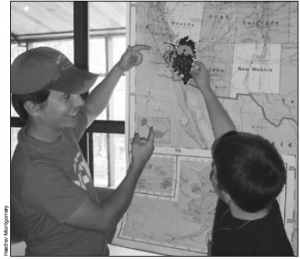Food for Thought: Practicing Conservation at the Table

Originally appears in the Fall 2005 issue
Did you know that a typical pound of produce distributed through a North American food terminal travels an average of over 1,500 miles by truck from farm to plate?1 That the burrowing owl is in danger of becoming extinct as a result of commercial agricultural practices?2 That much of the food consumed in the United States and Canada is grown in other countries?
The production, processing, and transport of our food consume enormous amounts of resources and take heavy tolls on the environment. With a growing world population and our increasing reliance on the global food market, issues such as the safety and security of our food supply, the effects of agriculture on wildlife, and our food system’s demands on energy sources will be magnified in the future. Fortunately, educated citizens who recognize food as a resource can help to minimize these impacts. Since eating is universal and since students often have choices about their own food, children have the power to make a positive impact on serious food-related issues.
This content is restricted to subscribers only.
If you are not yet a subscriber, please consider taking out a subscription here.
If you are an existing subscriber, kindly log in or contact us at info@greenteacher.com for more information.





